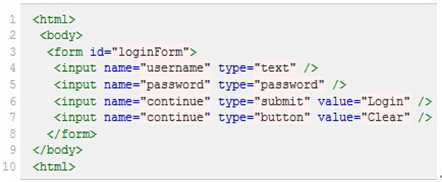标签:测试的 打印 了解 new cto 写法 文字信息 执行 get
在使用selenium webdriver进行元素定位时,通常使用findElement或findElements方法结合By类返回的元素句柄来定位元素。其中By类的常用定位方式共八种
1. By.name()
假设我们要测试的页面源码如下:
<button id="gbqfba" aria-label="Google Search" name="btnK" class="gbqfba"><span id="gbqfsa">Google Search</span></button>
当我们要用name属性来引用这个button并点击它时,代码如下:
1 public class SearchButtonByName {
2 public static void main(String[] args){
3 WebDriver driver = new FirefoxDriver();
4 driver.get("http://www.forexample.com");
5 WebElement searchBox = driver.findElement(By.name("btnK"));
6 searchBox.click();
7 }
8 }
2. By.id()
1 public class SearchButtonById {
2
3 public static void main(String[] args){
4
5 WebDriver driver = new FirefoxDriver();
6
7 driver.get("http://www.forexample.com");
8
9 WebElement searchBox = driver.findElement(By.id("gbqfba"));
10
11 searchBox.click();
12
13 }
14
15 }
3. By.tagName()
该方法可以通过元素的标签名称来查找元素。该方法跟之前两个方法的区别是,这个方法搜索到的元素通常不止一个,所以一般建议结合使用findElements方法来使用。比如我们现在要查找页面上有多少个button,就可以用button这个tagName来进行查找,代码如下:
public class SearchPageByTagName{
public static void main(String[] args){
WebDriver driver = new FirefoxDriver();
driver.get("http://www.forexample.com");
List<WebElement> buttons = driver.findElements(By.tagName("button"));
System.out.println(buttons.size()); //打印出button的个数
}
}
5. By.linkText()
这个方法比较直接,即通过超文本链接上的文字信息来定位元素,这种方式一般专门用于定位页面上的超文本链接。通常一个超文本链接会长成这个样子:
1 <a href="/intl/en/about.html">About Google</a>
我们定位这个元素时,可以使用下面的代码进行操作:
1 public class SearchElementsByLinkText{
2
3 public static void main(String[] args){
4
5 WebDriver driver = new FirefoxDriver();
6
7 driver.get("http://www.forexample.com");
8
9 WebElement aboutLink = driver.findElement(By.linkText("About Google"));
10
11 aboutLink.click();
12
13 }
14
15 }
6. By.partialLinkText()
这个方法是上一个方法的扩展。当你不能准确知道超链接上的文本信息或者只想通过一些关键字进行匹配时,可以使用这个方法来通过部分链接文字进行匹配。代码如下:
1 public class SearchElementsByPartialLinkText{
2
3 public static void main(String[] args){
4
5 WebDriver driver = new FirefoxDriver();
6
7 driver.get("http://www.forexample.com");
8
9 WebElement aboutLink = driver.findElement(By.partialLinkText("About"));
10
11 aboutLink.click();
12
13 }
14
15 }
7. By.xpath()
这个方法是非常强大的元素查找方式,使用这种方法几乎可以定位到页面上的任意元素。在正式开始使用XPath进行定位前,我们先了解下什么是XPath。XPath是XML Path的简称,由于HTML文档本身就是一个标准的XML页面,所以我们可以使用XPath的语法来定位页面元素。
假设我们现在以图(2)所示HTML代码为例,要引用对应的对象,XPath语法如下:

图(2)
绝对路径写法(只有一种),写法如下:
引用页面上的form元素(即源码中的第3行):/html/body/form[1]
8. By.cssSelector()
ssSelector这种元素定位方式跟xpath比较类似,但执行速度较快,而且各种浏览器对它的支持都相当到位,所以功能也是蛮强大的。
下面是一些常见的cssSelector的定位方式:
定位id为flrs的div元素,可以写成:#flrs 注:相当于xpath语法的//div[@id=’flrs’]
定位id为flrs下的a元素,可以写成 #flrs > a 注:相当于xpath语法的//div[@id=’flrs’]/a
定位id为flrs下的href属性值为/forexample/about.html的元素,可以写成: #flrs > a[href=”/forexample/about.html”]
如果需要指定多个属性值时,可以逐一加在后面,如#flrs > input[name=”username”][type=”text”]。
明白基本语法后,我们来尝试用cssSelector方式来引用图(3)中选中的那个input对象,代码如下:
WebElement password = driver.findElement(By.cssSelector("#J_login_form>dl>dt>input[id=’ J_password’]"));
标签:测试的 打印 了解 new cto 写法 文字信息 执行 get
原文地址:http://www.cnblogs.com/test-my/p/7803596.html